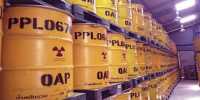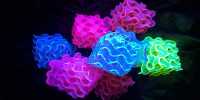The technology has been discussed in the latest issue of Nature Communication. Researchers know that water molecules emitted by comets can be accelerated by solar wind, and they release oxygen if they have a significant effect on the comet’s surface. Chemical reactions usually require energy in the form of heat. Kinetic energy can also be employed to initiate chemical reactions.
There are many challenges for humankind to go into space more than ever before, and one of them is the lack of oxygen. Researchers at Caltech have a new device that could one day be the key to a solution. They have developed a method of extracting oxygen from carbon dioxide inspired by comets and they believe that it could be used as a way to reduce greenhouse gases in our atmosphere as well as future induction missions.
Gold is an inert material, so researchers are sure that any oxygen can come from chemical reactions. Despite it appearing directly in front, the researchers were not sure if it would happen at all. Given that comets can emit carbon dioxide, the team was curious as to whether the same process occurs in CO2. They create a test where they accelerate the carbon dioxide molecules and cause them to collide with the gold foil surface.
Senior author Professor Konstantinos P. Giapis said in a statement, “When we thought it would be impossible to combine two oxygen atoms into one CO2 molecule because CO2 is a linear molecule, and you have to bend the molecule hard to make it work.” “You’re doing something really hard on the molecule.”
The device worked and researchers have found a new way to generate oxygen, which will be vital for future long-term travel to places like Mars, Luckily. The device works like a mini particle skin. The carbon dioxide molecule is ionized by stripping an electron. The molecule, which is now electronically charged, can be accelerated using an electric field, and a collision can break the molecule without releasing oxygen. The device has errors, which currently stand out due to not being particularly efficient. To accelerate every 100 molecules of carbon dioxide, the reactor produces only one or two oxygen molecules, obviously.
Giapis stated, “Is it the ultimate device? No. Is it a device that can solve the problem of Mars? No. But it is a device that can do something that is very tough.” “We’re doing some crazy things with this furnace.” We hope that the team and other researchers can find a way to improve the performance of the device because it sounds like really great technology.















